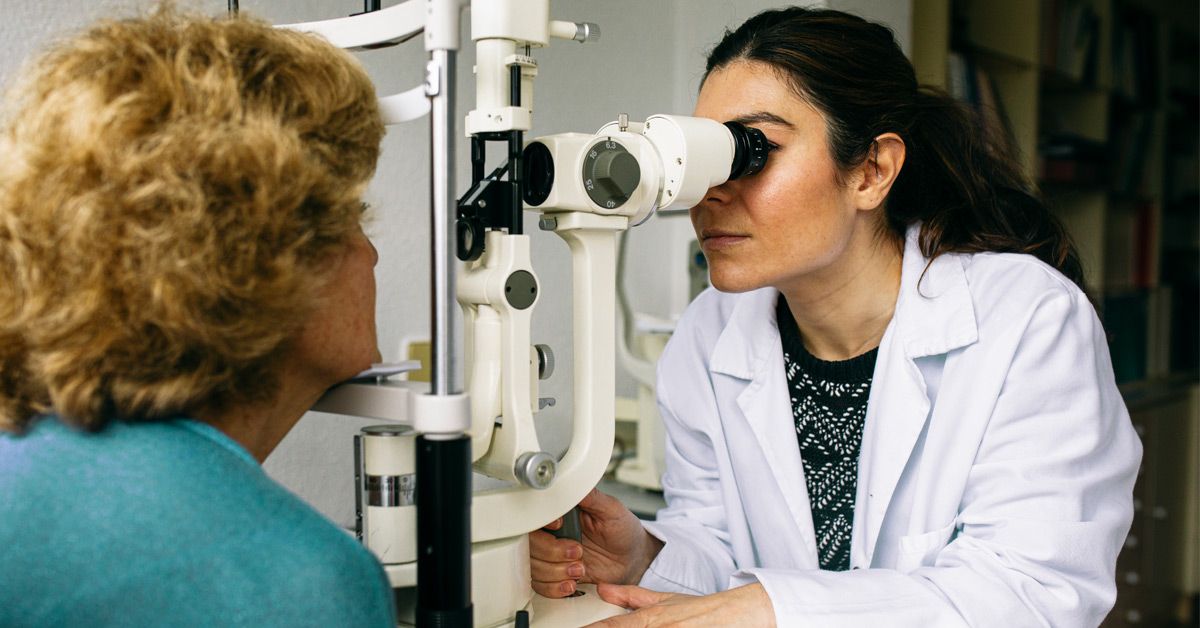


Semaglutide, the blockbuster drug used in Ozempic and Wegovy, has been linked to a rare blinding disease.
Patients with type 2 diabetes and obesity who take semaglutide appear to be at greater risk of nonarteritic anterior ischemic optic neuropathy (NAION) compared to those prescribed a non GLP-1 drug. NAION is a condition that causes sudden blindness, typically in one eye, due to a lack of blood flow to the optic nerve. There is no known treatment for the condition.
The findings, presented in the journal
“I am going to start mentioning this as a caution to a patient, but I’m not going to say that because you’re obese and you have diabetes and you’re taking this medication, that you’re going to go blind,” Yin Allison Liu, MD, PhD, an Associate Professor of Neuro-Ophthalmology at University of California Davis, told Healthline. She wasn’t affiliated with the study.
NAION is an elusive condition with little known about its exact cause.
“Ischemic optic neuropathy is very common in older diabetic patients that have vasculopathic risk factors, although its pathogenesis is completely not understood,” Nicholas J. Volpe, MD, a neuro-ophthalmologist and Chairman of the Department of Ophthalmology at Northwestern University’s Feinberg School of Medicine, told Healthline. Volpe wasn’t involved in the research.
Researchers at Massachusetts General Brigham utilized patient data to look for any retrospective correlation between semaglutide and NAION over one year. They investigated two cohorts, each representing one of the FDA-approved indications for semaglutide: obesity and type 2 diabetes. In total the records of nearly 17,000 patients were included in the study.
Of those patients, 710 had type 2 diabetes and 979 were overweight or obese.
Among patients with type 2 diabetes, the average age was 59 years old and more than half were female. The age of patients in the overweight or obese group skewed younger, an average of 47 years old, and was 72% female.
The study authors asked a simple question: were patients in this group more or less likely to develop NAION if they were prescribed semaglutide or a non-GLP-1 medication?
They found a clear signal.
Patients with type 2 diabetes were more than four times as likely to have a diagnosis NAION; patients with obesity were more than eight times as likely.
Over the one-year period, there were 17 incidences (8.9%) of NAION among those taking semaglutide in the diabetes cohort, but only six (1.8%) among those taking a non-GLP-1 drug. The results were even more pronounced among overweight and obese patients: 20 NAION events (6.7%) occurred in those taking semaglutide, compared to just 3 (0.8%) for those who did not. Whether these events were connected to semaglutide or were confounded by the higher risks associated with obesity and type-2 diabetes is not clear.
Volpe reiterated to Healthline that although the findings demonstrate an association, much more research is needed.
“It does not establish causality. It does not establish danger. It does not do anything besides call attention to this and the potential need for us to think about this and study it more carefully,” he said.
Patients and healthcare providers should discuss the risks and benefits of any medication in the context of an individual’s personal circumstances and medical history.
“If I were a patient that wanted to take this type of medication, I would not hesitate based on this study, thinking that I’m going to go blind,” said Volpi.
NAION (nonarteritic anterior ischemic optic neuropathy)is a rare blinding disease that causes sudden blindness in one eye, often after waking. It is caused by a lack of blood flow (ischemia) to the optic nerve, which connects the eye to the brain. The condition is rare, only occurring in 2-10 per 100,000 people. It is the second most common cause of blindness due to optic nerve damage behind glaucoma.
The cause or pathogenesis of NAION is still not well understood, although it is generally believed to be associated with vasculopathic risk factors including diabetes, hypertension, and high cholesterol.
“Despite knowing about this disease for 75 years, it was first described or recognized in the 1950s, we as neuro-ophthalmologists have never firmly established that only people with high blood pressure get this disorder or only people with diabetes,” said Volpe.
The most significant risk factor for NAION is an anatomical condition known as “disc-at-risk” or cupless optic nerve: when the structure of the eye itself causes crowding of the optic nerve fibers.
“With this condition, the blood flow or oxygen delivery into the eyes can be relatively at risk when we have other confounding factors,” said Liu.
More controversial evidence has suggested that other common medications, including
While a serious complication, NAION is a rare condition and little is known about the causes. “We know about as much about the pathogenesis of this condition today as we did 31 years ago when I did my neuro-ophthalmology fellowship,” said Volpi.
In an observational retrospective study, researchers found that patients with type 2 diabetes or obesity who were taking semaglutide were more likely to develop a rare blinding condition than those taking a non-GLP-1 drug.
The condition, known as non-arteritic anterior ischemic optic neuropathy (NAION), causes sudden blindness in one eye, often upon waking in the morning.
Experts told Healthline that the findings are still early and do not demonstrate causality. Patients should consult with their healthcare provider about the risks and benefits of prescribed medications.